"Running up a mountain like a bird spreading its wings": Karl Egloff's quest to become the fastest man to climb the seven summits
The 44-year-old speed climber has Mount Everest in his sights as he strives to become the fastest to climb the tallest mountains on all seven continents
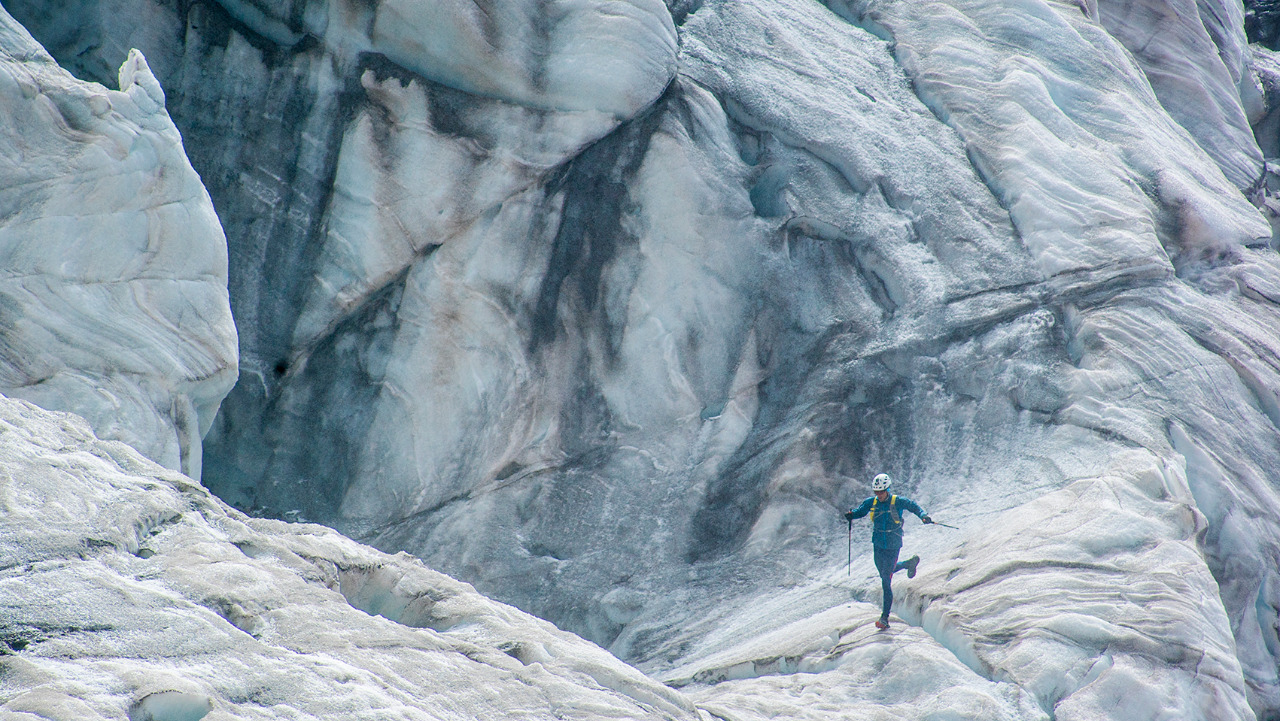
Karl Egloff's latest challenge is an extreme, globetrotting test of climbing ability. The 44-year-old speed climber has set multiple fastest time records in his career and now has his sights on a fresh challenge: to snag the speed records for the tallest mountains in each of the world's seven continents.
He already holds the records for the fastest ascents of the tallest mountains in Europe, Africa, and North and South America, having scaled Elbrus, Kilimanjaro, Denali and Aconcagua in record times.
With just three peaks to go, I caught up with Karl to find out why he's taken on this crazy challenge and what the next few months hold for him.
How Karl started speed climbing
Karl's introduction to speed climbing was certainly unique.
In his early adult life, the Ecuadorian was a mountain guide in his home country, leading tourists and climbers around the high plateaus and rugged landscape of the Andes mountains.
One day in 2012, with no prior speed climbing experience, a fellow guide challenged him to run up Cotopaxi, Ecuador's second-tallest mountain, to see how fast he could do it.
"One day we decided to run up the mountain, and I ran up the mountain for the very first time, and when I came back, I'd broken the world speed record," explains Karl, who sped up and down the 7125ft (2172m) peak in just one hour and 36 minutes.
All the latest inspiration, tips and guides to help you plan your next Advnture!
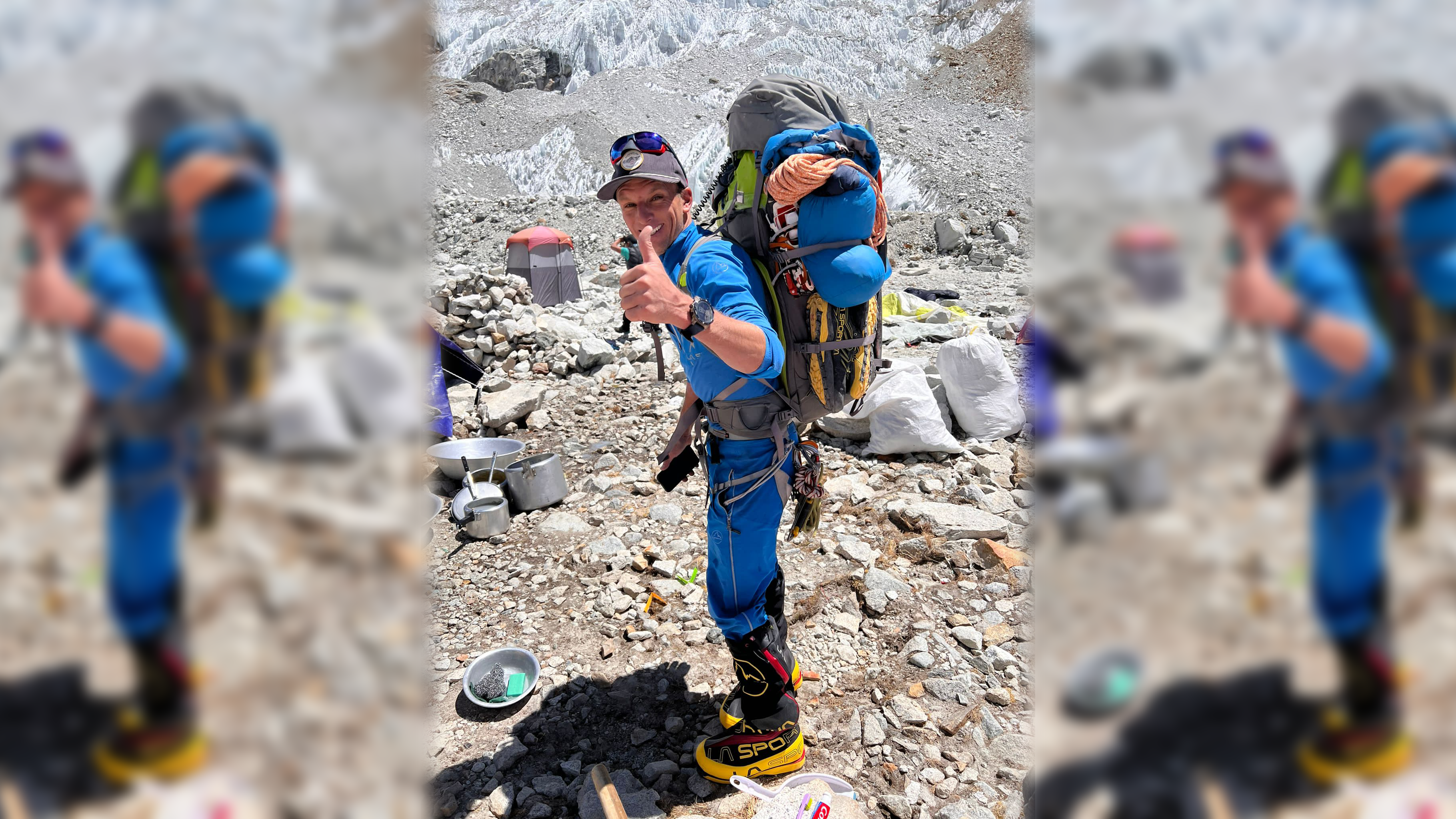
"This was a huge thing in Ecuador... it's crazy to do the mountain in an one hour 30, when normally people do it in 12 hours.
"It's breaking all traditions, and in the end, I felt so good doing this. With no security, running up the mountain like a bird spreading its wings. I thought, 'Hey, this is a great sport, and I love this sport,'" he continues.
Thirteen years later, Karl is the proud owner of 12 speed climbing world records, including an astonishing record ascent of Kilimanjaro in Tanzania, which Karl smashed in just six hours and 42 minutes back in 2014, although he doesn't credit it as his proudest achievement.
"The thing I'm really proud of is being alive," he laughs.
"I'm aware that this sport is risky, especially when you're going down you're risking much. I'm happy that I'm here, we always say in Swiss-German, an old guide is a good guide because he's alive."
The Seven Summits challenge
Karl has three mountains to go to complete his daunting Seven Summits challenge and become the first to hold all seven speed records at once.
To claim his crown, Karl needs to break the speed records for ascending the Vision Massif in Antarctica, Carstensz Pyramid in Oceania, and Mount Everest, the tallest mountain in Asia and, of course, the world. All ascents will be made without oxygen.
Karl will head to Everest first, to attempt his likely hardest climb in ideal early summer conditions. He'll need to beat the current record of 16 hours and 45 minutes, set by Italian mountaineer Hans Kammerlander in 1996.
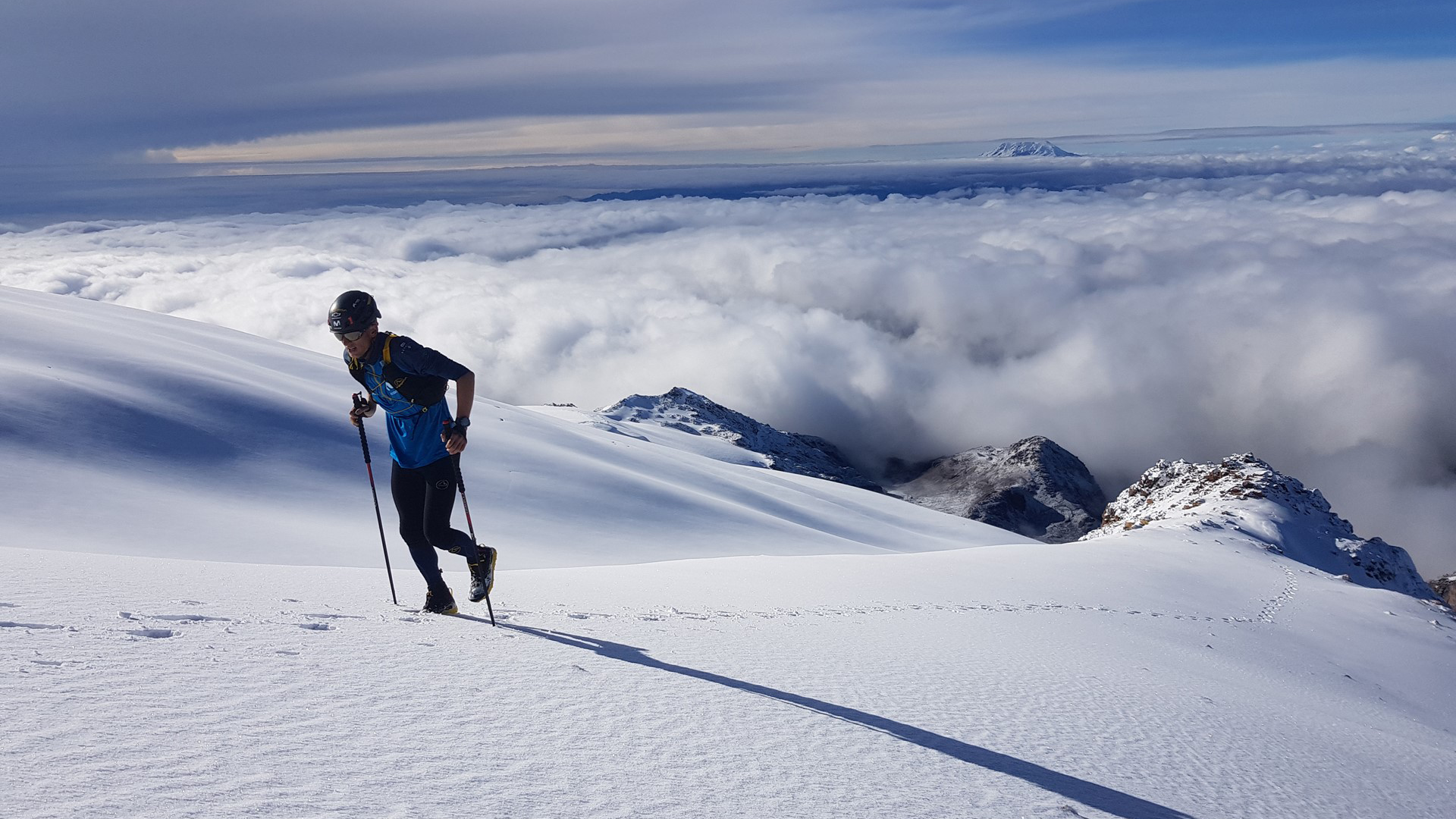
To make matters more interesting, Karl won't be the only hopeful record-breaker on the mountain this spring, as American athlete Tyler Andrews will also be attempting to break the world speed record.
Should he break the beat Andrews' time and snag the record, Karl will head to Antarctica and Oceania in 2026 to complete his Seven Summits challenge before considering a well-earned retirement from speed climbing.
"I know that I'm already in the last years of my career, and recovery is not so easy anymore," explains Karl.
"I'm enjoying my last dance.
"I absolutely know that there's a time to quit, and this time you should never ignore...It's clear this line is coming, and at one point, I won't risk anymore."
Acclimatization
Alongside a strict regiment of intensive cardio and strength training, Karl is preparing for his trip by acclimatizing in hypoxic tents.
These high-tech tents simulate the low oxygen levels of high-altitude environments by creating a nitrogen-dense environment for you to sleep in.
The air at sea level contains 20.9% inhalable oxygen, a number that drops dramatically the higher you get. At Everest base camp, it's down to 10.4%, and by the summit, the air contains just a third of the inhalable oxygen at regular sea level.
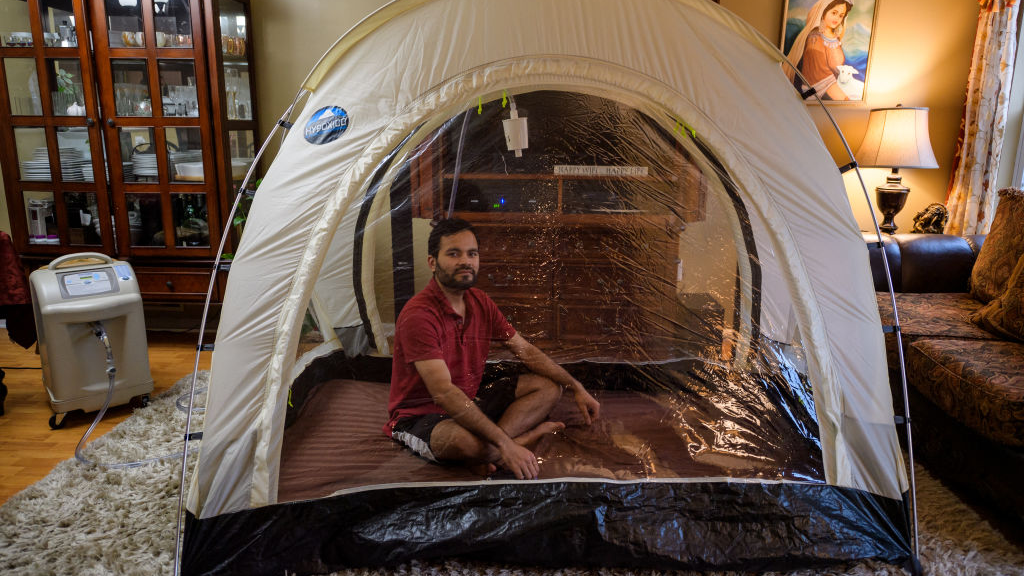
Sleeping at the simulated altitude of a hypoxic tent saturates your blood oxygen levels, forcing your body to release its red blood cells and ready itself for conditions at 20,000ft / 6,096m.
"It's a crazy tool. I'm in the tent and watching a Champions League game at 6,000 meters of altitude, which of course makes it very nice," says Karl.
"I want to train my body to get all the red blood cells, so my body can train tired and also feel like there's a lack of oxygen at home. And I can eat, and I can perform feeling the same as I'm going to be feeling at that altitude."
Footwear
Karl will be making his next ascent in gear from his sponsor, La Sportiva, which boasts a well-rated range of high-quality climbing gear for harsh alpine conditions.
"I have tons of different options, but I'll probably be using the G2 boots for the summit. I don't know how the weather is going to be there, but I did Makalu with the G2, and they were really good," says Karl.
"But of course, you are not starting with the G2 from very early. You are putting them probably in a certain camp and going lighter for the other camps with a G5 or something like that".
La Sportiva's G5 and G2 boots are some of the best in the business for harsh alpine ascents. They feature large stud-like lugs and offer plenty of protection from the elements.
Conditions on Everest are unforgiving all year round. Even in the spring climbing season, temperatures are likely to plummet to depths of -26°C (-15°F) at the summit, so Karl will need all the protection he can get from his climbing gear.
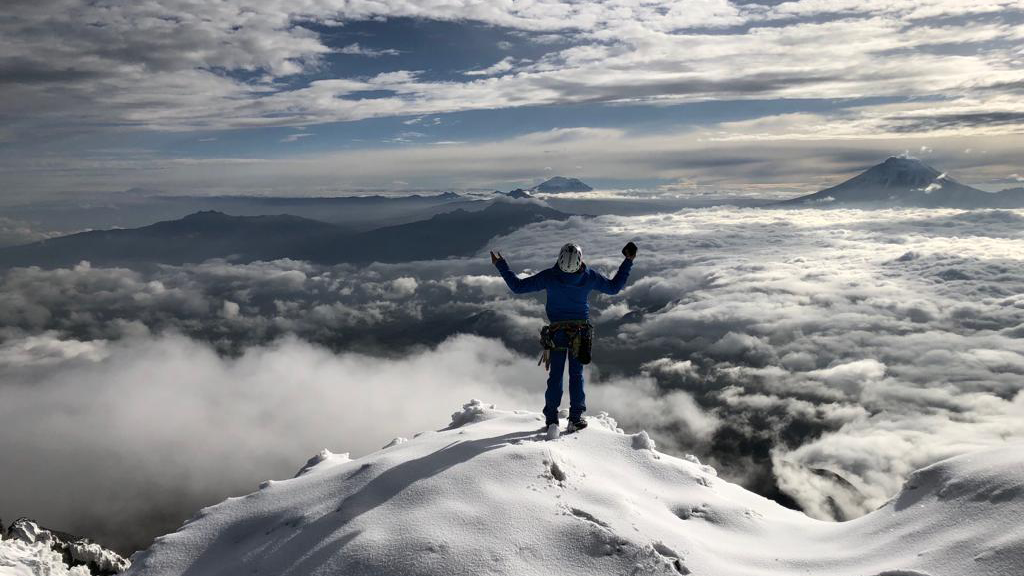
Karl has yet to announce the official date for his upcoming Everest ascent, so stay tuned to Advnture for all the latest updates.
- The best winter hiking boots keep your feet warm, dry, and protected on the trails with our top choices
- The best ice axes for tackling frozen terrain

Will Symons developed his love of the outdoors as a student, exploring every inch of Sussex’s South Downs national park and swimming off the Brighton seafront. Now a staff writer for Advnture, Will previously worked as a freelance journalist and writer, covering everything from cricket to ancient history. Like most Advnture staff, Will’s free time is rarely spent indoors, he can often be found hiking, open water swimming or playing cricket.
